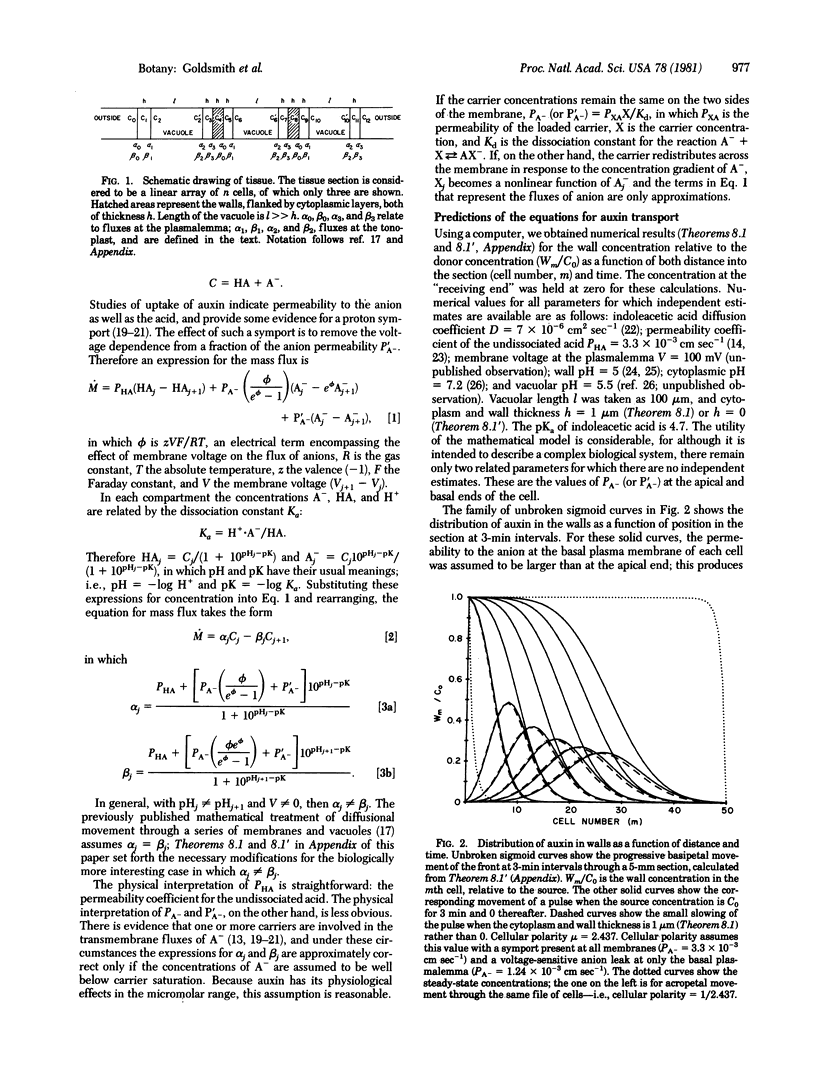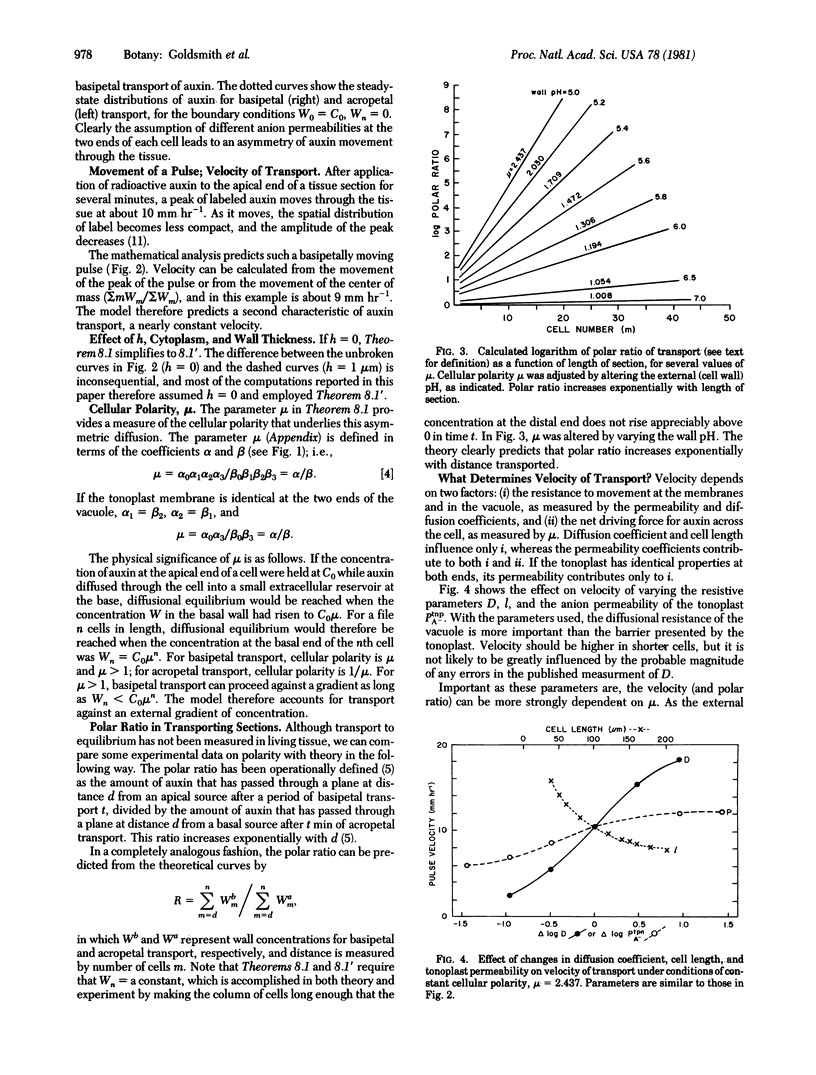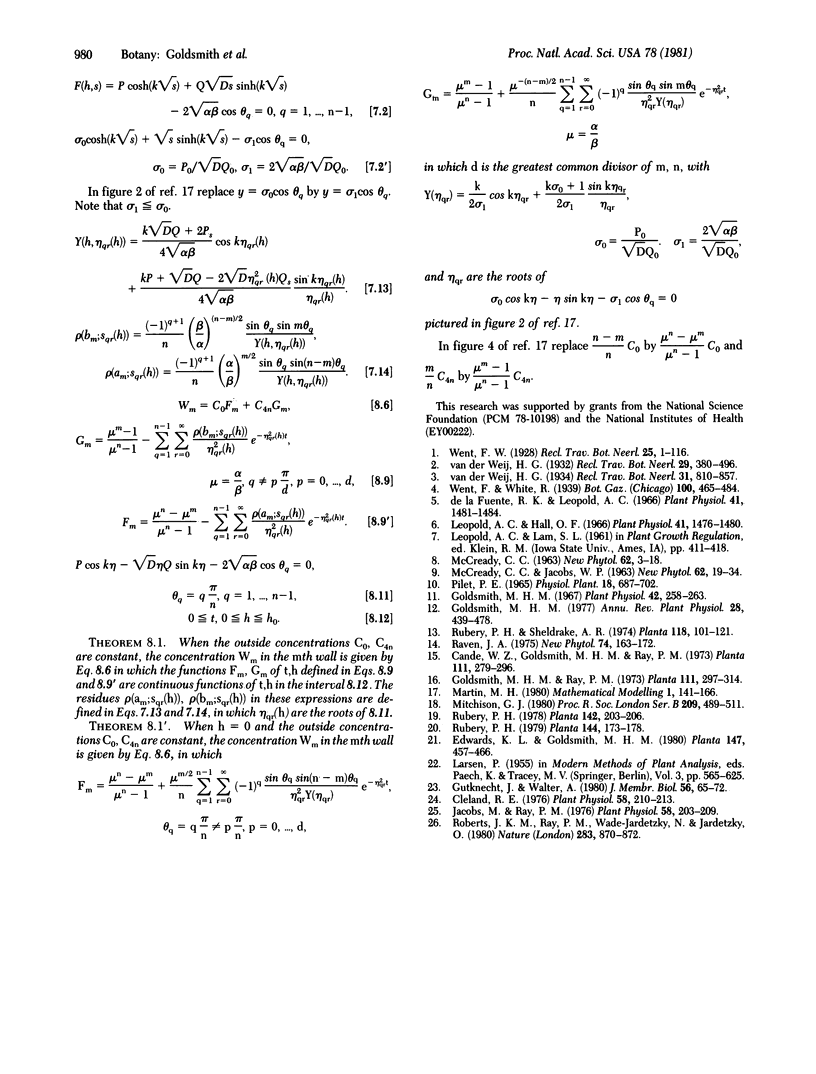Abstract
Equations have been developed to describe the diffusional movement of a weak acid such as the auxin indoleacetic acid through a long file of vacuolated cells, where cellular accumulation is driven by the pH gradients across the cell membranes. If the permeability to the auxin anion is greater at one end of the cell than at the other, diffusional movement takes the form of polar transport, which exhibits: a nearly constant velocity either for the front or for a pulse of radioactive auxin, the capacity to move auxin against an external gradient of concentration, and a polar ratio that increases exponentially with the length of the section. The determinants of velocity include both diffusion through the vacuole and permeation steps at the cell membranes. Except for the permeabilities of the membranes to the anion, values are now available for all of the physical parameters in the equations. With reasonable estimates of permeability coefficients for the anion, the equations predict a velocity of transport of about 1 cm hr-1, which agrees well with measured values. The analysis indicates, however, that the underlying cellular polarity may be greater than has been heretofore assumed. We thus demonstrate that the hypothesis of chemosmotic polar diffusion is capable of accounting quantitatively for the major features of auxin transport and provides a theoretical framework whose elements can be tested in future experiments.
Keywords: indoleacetic acid, polar transport of auxin, cellular polarity
Full text
PDF




Selected References
These references are in PubMed. This may not be the complete list of references from this article.
- Cleland R. E. Kinetics of Hormone-induced H Excretion. Plant Physiol. 1976 Aug;58(2):210–213. doi: 10.1104/pp.58.2.210. [DOI] [PMC free article] [PubMed] [Google Scholar]
- Goldsmith M. H. Movement of pulses of labeled auxin in corn coleoptiles. Plant Physiol. 1967 Feb;42(2):258–263. doi: 10.1104/pp.42.2.258. [DOI] [PMC free article] [PubMed] [Google Scholar]
- Gutknecht J., Walter A. Transport of auxin (indoleacetic acid) through lipid bilayer membranes. J Membr Biol. 1980 Aug 21;56(1):65–72. doi: 10.1007/BF01869353. [DOI] [PubMed] [Google Scholar]
- Jacobs M., Ray P. M. Rapid Auxin-induced Decrease in Free Space pH and Its Relationship to Auxin-induced Growth in Maize and Pea. Plant Physiol. 1976 Aug;58(2):203–209. doi: 10.1104/pp.58.2.203. [DOI] [PMC free article] [PubMed] [Google Scholar]
- Leopold A. C., Hall O. F. Mathematical model of polar auxin transport. Plant Physiol. 1966 Nov;41(9):1476–1480. doi: 10.1104/pp.41.9.1476. [DOI] [PMC free article] [PubMed] [Google Scholar]
- de la Fuente R. K., Leopold A. C. Kinetics of polar auxin transport. Plant Physiol. 1966 Nov;41(9):1481–1484. doi: 10.1104/pp.41.9.1481. [DOI] [PMC free article] [PubMed] [Google Scholar]


